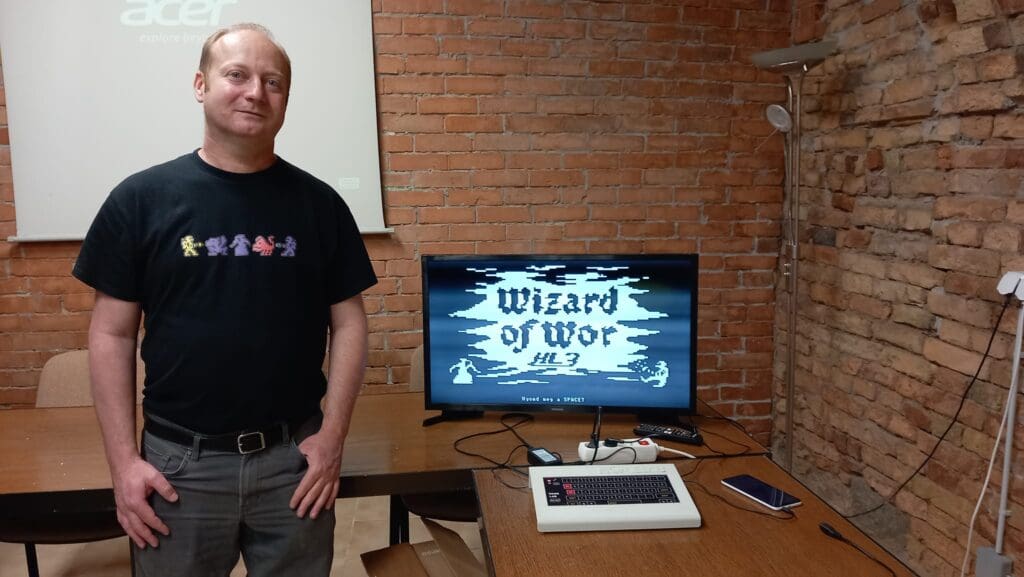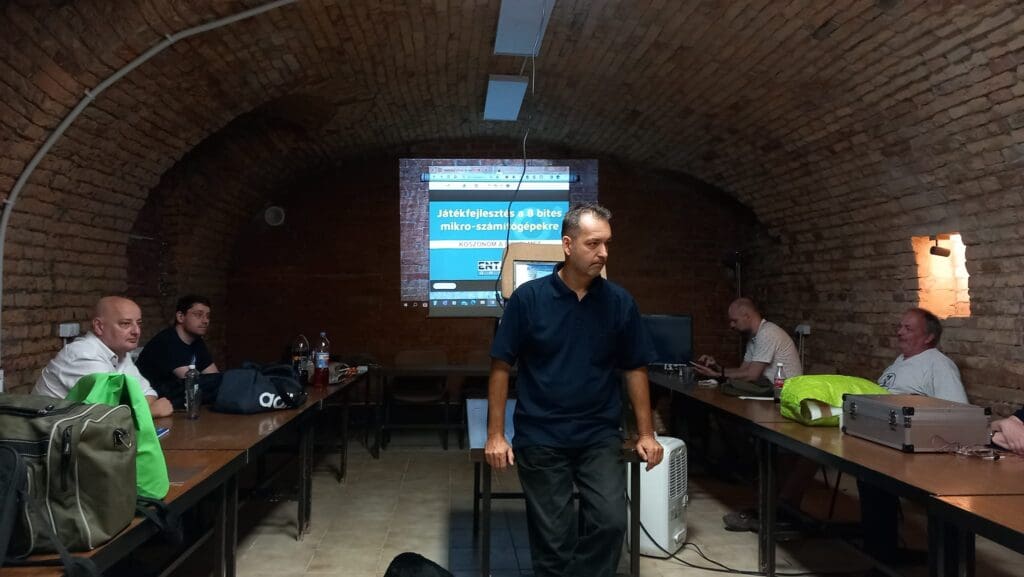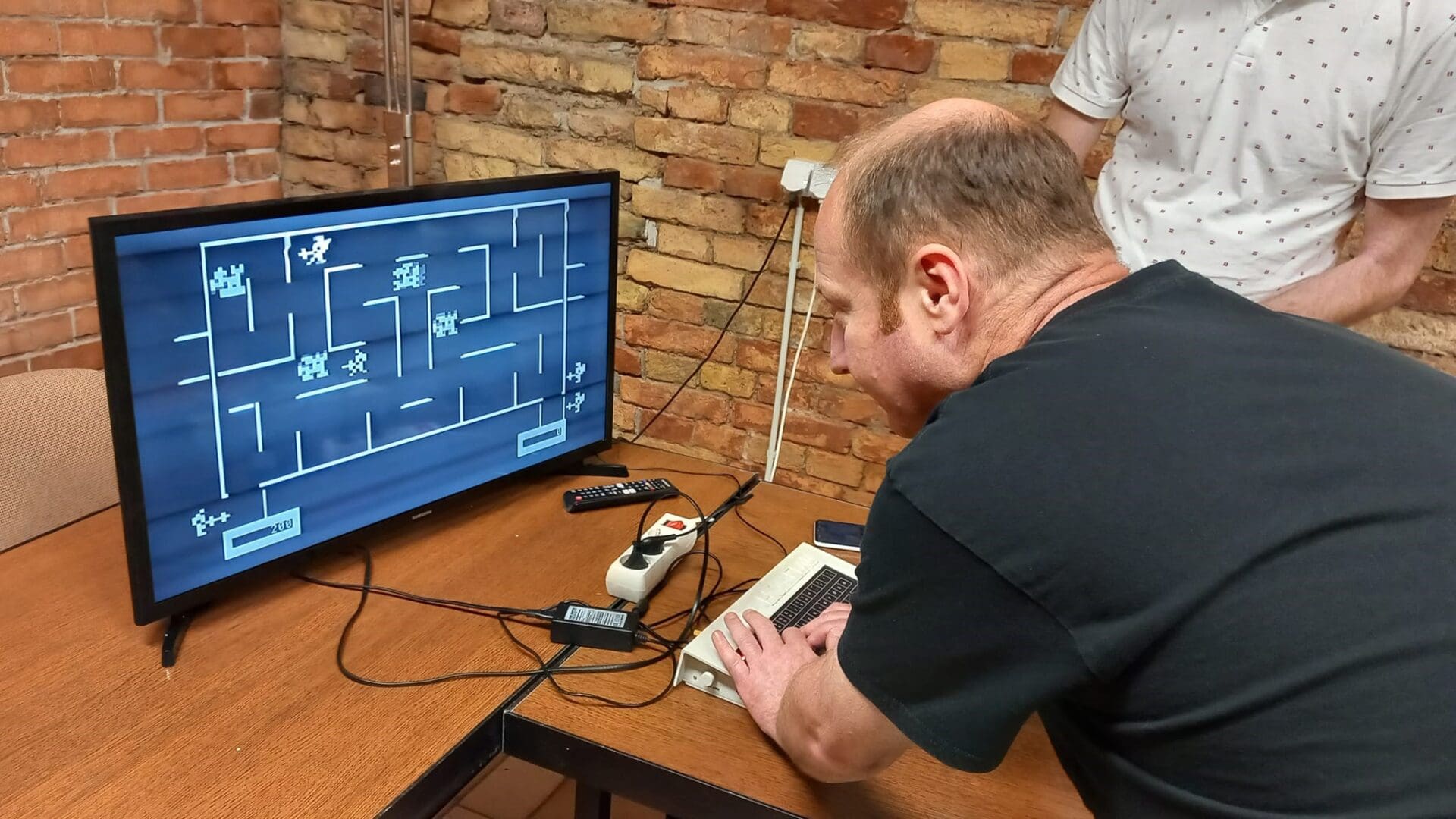A competition held by the John von Neumann Computer Society’s HCC division featured adaptations of later or widely known computer games onto the Hungarian Homelab-3 hobby computer, which was introduced over forty years ago. Games like Doom or Wizard of Wor, known worldwide, were among those showcased. This demonstrates the advancement in programming, as enthusiastic coders managed to successfully adapt games from several generations of platforms to this early computer, pushing its capabilities to the limit.
The John von Neumann Computer Society’s HCC Retro Microcomputer Division’s competition yielded a series of intriguing submissions, including games and demos. The aim was to resurrect the legendary Hungarian Homelab-3 microcomputer, entirely developed in Hungary. The creators of the award-winning submissions were honoured at the John von Neumann Computer Society’s Báthori Street cellar premises during the HCC club event, Homelab Easter, held after several decades. What makes the creations fascinating is that when the Hungarian hobby computer was introduced in 1983 similar quality and optimized creations were not available. Most enthusiasts were just starting to acquaint themselves with programming.
In the gaming category, Zoltán Varga won with his adaptation of the classic Wizard of Wor primarily for the Commodore 64 computer. Several other intriguing games were submitted to the competition, including Tetris, Lunar Lander, Space Invaders, and, as legend has it, a Homelab version of Doom, accessible on virtually every existing computer platform.

In the demo category, last year’s winner of the Homelab-2 gaming competition, László Nickmann, triumphed. He delivered an exciting presentation during the club afternoon, revealing the behind-the-scenes of game development on 8-bit microcomputers. Other than receiving his rewards, he also signed a programming contract with the PleasureBytes retro game publisher, paving the way for a new Homelab software release.

The Homelab computer was designed by a passionate teenage amateur sibling pair, József Lukács and Endre Lukács, in the early 1980s. Their goal was to create a computer accessible to the average person. The Homelab-3 model, completed in 1983, was primarily known as a kit. Therefore, they released documents and some basic tools that allowed computer enthusiasts to assemble it at home. Newly minted computer owners wrote their own programmes, most of which were made public among members of the Computer Builder Club, founded and led by Endre Simonyi.
‘Homelab-3 didn’t have the refined, full graphics capabilities of its predecessor, Homelab-2, so I was very surprised by the level of visual quality achieved by the participants in the competition. This requires the combination of individual and collective knowledge with a modern developer mindset, alongside a passion for computer history. We continue to support creative activities in retro microcomputers; they are very popular at our permanent exhibition in Szeged, at the ITK, and are currently also on display at our School-Computer exhibition. We recently held a Wizard of Wor championship on the Commodore 64 platform in Túrkeve, it’s quite a surprise that we can now do the same on the Hungarian Homelab-3!’, CEO of the John von Neumann Computer Society Gábor Képes commented at this year’s award ceremony.
The John von Neumann Computer Society is the longest-standing Hungarian IT organization. Since its establishment in 1968, it has played a prominent role in creating digital equality. Among its activities, it focuses on nurturing IT talent, organizing the Nemes Tihamér Competitions and the National Graphic Programming Competition, and preparing teams for international Olympiads (IOI, CEOI, EGOI, eJOI, IIOT). It is the national distributor and operator of the ECDL/ICDL certification system. It is the founder and maintainer of the Information Technology History Museum located in the Szent-Györgyi Albert Agora in Szeged. The society’s goal is to act as the GPS of the digital world, facilitating navigation in the information society.
Related articles:
Sources: Hungarian Conservative/John von Neumann Computer Society








